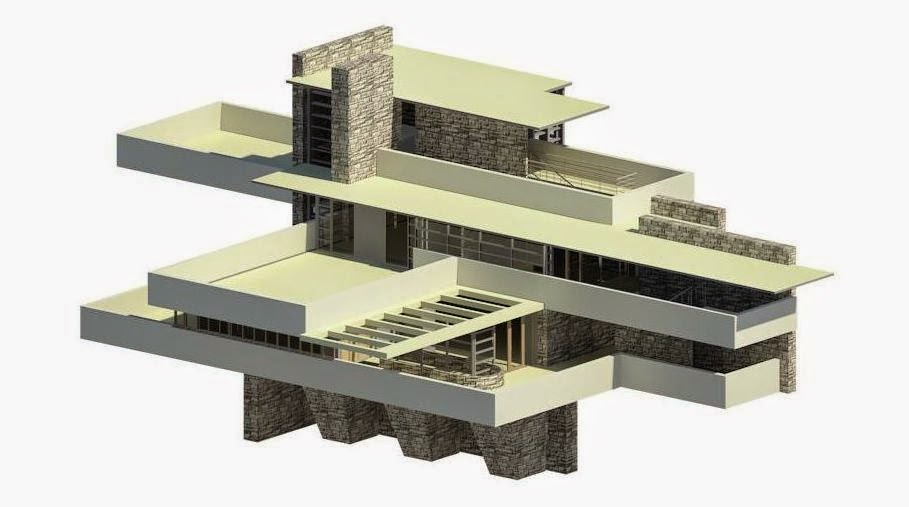- Architecture&Criticism -
La fuerza de la gravedad está siempre presente en el rostro de la arquitectura a través del peso de los materiales con los que se construye un edificio. Existen casos singulares como el Museo Gughenggeim de Nueva York, diseñado y construido por F.LL.Wright en 1.959. En este caso la gravedad no es algo meramente estático e inerte, sino que es capaz además de dotar de movimiento a todo el proyecto e incluso de generar su funcionamiento.
Cuando uno entra en el Gughenggeim se topa en primer lugar con el Hall, un magnífico espacio centralizado cubierto con una cúpula de cristal que ilumina todo el museo con luz cenital. Sin duda es este el único vestigio de la arquitectura clásica que puede encontrarse en esta obra de Wright, pero esto no hace sino añadirle valor al conectarla nítidamente con la historia de la arquitectura. A partir de ahí el espectador tiene que coger el ascensor que lo transportará hasta el nivel superior. En ese punto es la propia fuerza de la gravedad la que por inercia le hace descender por la rampa hasta situarlo en cada una de las salas de exposición y finalmente devolverlo al hall de entrada por el que accedió. La gravedad está presente en todo momento durante este recorrido, pero es la arquitectura la encargada de contenerla para que el espectador descienda suavemente y devolverlo sano y salvo al punto inicial. Justo allí donde la gravedad se convirtió en su guía para visitar el museo.
Fuente: www.minube.com
The Gravity Force is always shown in the face of architecture through the weight of materials a building is constructed with. But there are singular buildings as Gughemggeim Museum of New York, designed and constructed by F.Ll.Wright in 1.959, where the gravity is not only something static and motionless, but something as well dinamic and able to generate the movement of visitors inside the building.
When somebody enters inside the Gughemggeim contemplates the Hall, a magnificent centralized space covered with a glass dome that illuminates the whole museum with light from above. Without a doubt, this is the only sign of classical architecture that can be found in the Gughemggeim. Another reason to consider the building as a master piece: the dome conects it directly with architecture history. When the visitor is in the Hall, he has to take the elevator to go up to the upper floor. From this point is the gravity which takes the people and move them by inertia through the spiral ramp until the exhibitions halls and finally to the bottom floor. The gravity force takes visitors throughout the visit, but the architecture stops it for a gentle descent for the people that arrive to the Hall safely, just in the point where gravity started to be their tourist guide.

Fuente: http://www.flickriver.com
Fuente: www.minube.com
The Gravity Force is always shown in the face of architecture through the weight of materials a building is constructed with. But there are singular buildings as Gughemggeim Museum of New York, designed and constructed by F.Ll.Wright in 1.959, where the gravity is not only something static and motionless, but something as well dinamic and able to generate the movement of visitors inside the building.
When somebody enters inside the Gughemggeim contemplates the Hall, a magnificent centralized space covered with a glass dome that illuminates the whole museum with light from above. Without a doubt, this is the only sign of classical architecture that can be found in the Gughemggeim. Another reason to consider the building as a master piece: the dome conects it directly with architecture history. When the visitor is in the Hall, he has to take the elevator to go up to the upper floor. From this point is the gravity which takes the people and move them by inertia through the spiral ramp until the exhibitions halls and finally to the bottom floor. The gravity force takes visitors throughout the visit, but the architecture stops it for a gentle descent for the people that arrive to the Hall safely, just in the point where gravity started to be their tourist guide.

Fuente: http://www.flickriver.com



No hay comentarios:
Publicar un comentario